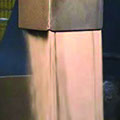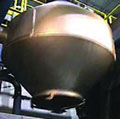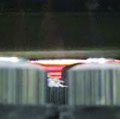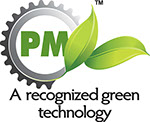Company Summary
Resonac Powdered Metals America, Inc. has been supplying the highest quality, technologically advanced powdered metal products in North America since 1989. Our customers know they can rely on us to deliver the most innovative designs while maintaining stringent tolerance requirements.
Resonac Powdered Metals America, Inc., while the dominant Valve Guide supplier in North America, also manufactures Structural parts (timing pulleys, sprockets/VCT, and sensor plates) primarily for the automotive industry. The remainder of our product line supports motorcycle and lawn & garden applications.
Resonac Powdered Metals America, Inc. is owned by Resonac Materials America. As our parent company, Resonac Materials supports all North American operations with materials development, intricate tool design, and functional engine testing. This ensures Resonac Powdered Metals America 's abilities to meet rigorous demands of the market.
History
Around 1977, Hitachi Chemical began exporting powdered metal products to the U.S. market. As the business increased, it became apparent that local production facilities would be required to provide adequate service to North American customers. With that goal in mind, Hitachi Powdered Metals began a feasibility study for a U.S. plant in 1986.
In April 1987, thirty acres of land were acquired in Greensburg, Indiana, and Sintering Technologies, Inc. was formed. At the time, Sintering Technologies, Inc. was a joint venture between Hitachi Powdered Metals of Matsudo, Japan; Cummins Engine Company of Columbus, Indiana; and Hitachi Metals America of Purchase, New York. Hitachi Powdered Metals' participation in Sintering Technologies, Inc. was the result of a need for local production capability for products which various U.S. customers, including Cummins Engine Company, were importing from Japan. Cummins' desire was for improved access to the advances in powdered metal technology. The supplier/customer relationship provided the forum for initial discussion in 1986.
On April 1, 2012, Sintering Technologies, Inc. changed its name to Hitachi Powdered Metals (USA).
On April 28, 2020, Hitachi Chemical was purchased by Showa Denko. On October 1, 2020, Hitachi Powdered Metals (USA) changed its name to Showa Denko Materials Powdered Metals (USA), Inc.
On January 1, 2023, Showa Denko Materials Powdered Metals (USA), Inc. changed its name to Resonac Powdered Metals America, Inc.
About Us
Powdered Metallurgy

Powder

Blending

Compacting
Powdered metallurgy was practiced long before ancient artisans learned to melt and cast iron. The Egyptians made iron tools using P/M techniques from at least 3000 B.C. The ancient Inca Indians also made jewelry and artifacts from precious metal powders. The first modern P/M products was the tungsten filament for electric light bulbs developed in the early 1900's. This was followed by tungsten carbide cutting tool material in the 1930's, automobile parts in the '60s and '70s, aircraft turbine engine parts in the '80s, and parts made by powder forging (P/F), metal injection molding (MIM) and warm compacting in the '90s.
Powder Metallurgy, or P/M, is a highly developed method of manufacturing reliable ferrous and nonferrous products. Made by mixing elemental or alloy powders and compacting the mixture in a die, the resultant shapes are then sintered or heated in a controlled atmosphere furnace to bond the particles metallurgically. Basically, a "chip-less" metalworking process, P/M typically uses more than 97% of the starting raw material in the finished part. Because of this, P/M is energy and materials conserving process.
The P/M process is cost effective in producing simple or complex parts at, or, very close to, final dimensions in production rates which can range from a few hundred to several thousand parts per hour. As a result, only minor machining is required. P/M parts also may be sized for closer dimensional control and / or coined for both higher density and strength.
Most P/M parts weigh less than 5 pounds (2.27kg), although parts weighing as much as 35 pounds (15.89kg) can be fabricated in conventional P/M equipment. Many of the early P/M parts, such as bushings and bearings, were very simple shapes, as contrasted with the complex contours and multiple levels, which are often produced economically today.

Sintering
Advantages of the P/M process:
• Eliminates or minimizes machining
• Eliminates or minimizes scrap loses
• Maintains close dimensional tolerances
• Permits a wide variety of alloy systems
• Produces good surface finishes
• Provides heat-treated material for strength or increased wear resistance
• Provides controlled porosity for self-lubrication or filtration
• Facilitates the manufacturing of complex or unique shapes
• Offers long-term performance reliability in critical applications
• Cost effective

Quality and Environmental
Quality and Environmental Policy: To exceed customer expectations, prevent and reduce pollution, comply with legal requirements, and to continually improve.
The goal is the development and maintenance of a management system that provides for continual improvement, emphasizing the need to exceed customer expectations by defect prevention, reduction of variation and waste in the supply chain, and prevention and reduction of impacts to the environment. We are not only committed to reducing waste but also to being 100% landfill free. The reduction of carbon emissions represents another major aspect of our environmental plan.
Certifications
TS16949
Dec. 2006
ISO14001
Jul. 2003
Ford Q1
Sep. 1998



Pictured here is Resonac's Butterfly Garden. In May of 2017, as a part of our commitment to the environment, we set aside part of our property as a “Green Space.” We planted native pollinator plants that help rejuvenate the honey bee population, a keystone to the world’s environmental health.
Fun fact: The world's food supply depends on pollination by bees. So anything that causes a significant loss of honey bees would severely limit the foods available to us. (Source: Agricultural Research, Vol. 56, Issue 2).
Copyright © Resonac Powdered Metals America, Inc